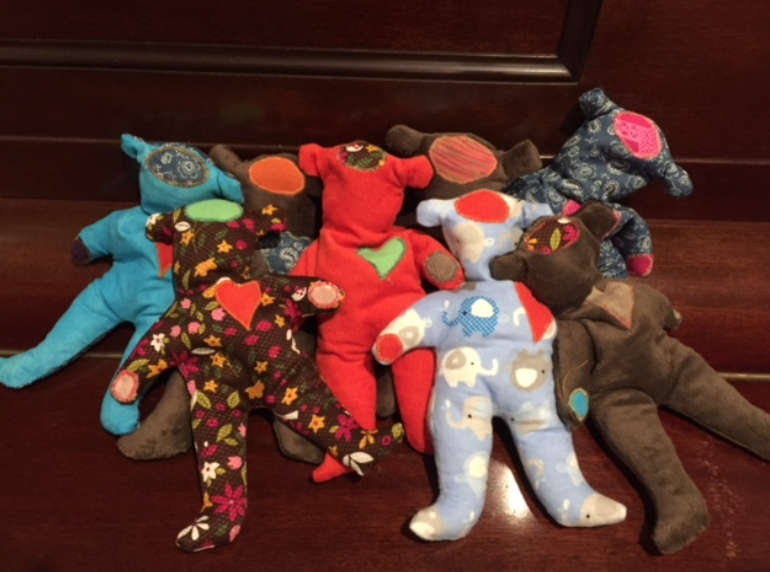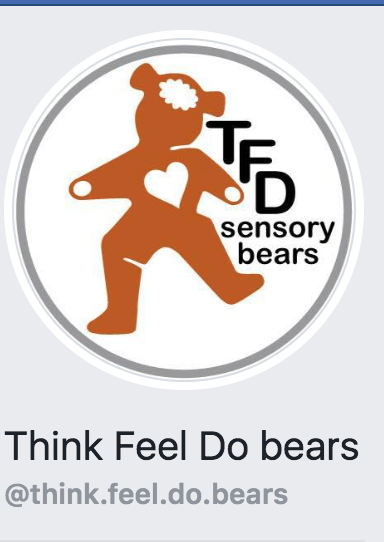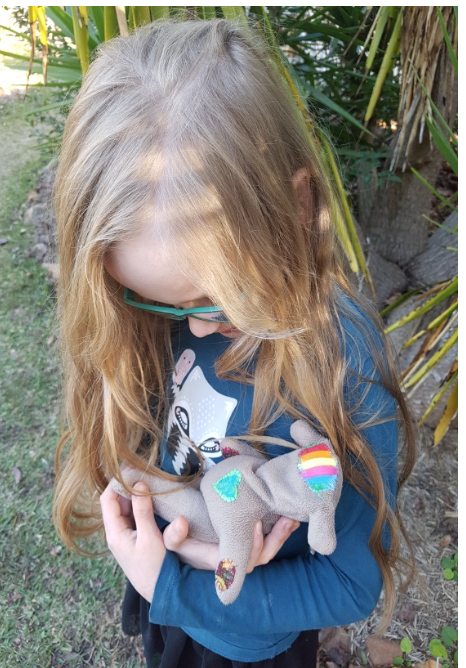These bears are meant to be imperfectly perfect. In our house, they have been accepted for who they are, with their differences embraced and their TFD message is being shared with many people our children come into contact with.
-Think.Feel.Do.
This is the message that tugged at my heart when I first came across Think-Feel-Do Sensory Bears through Twitter. In my preschool world, I just knew that these bears would find a home in some of my classrooms. I set out on a quest to find out how I could order them but did not realize until I connected with the creators that they come from the land down under, Australia!
Another reason to love the power of social media, especially Twitter, where practitioners living on opposite sides of the world can connect in real time. My quest to bring Think-Feel-Do Sensory Bears to my school nursing practice was not deterred by the distance between New Jersey and Australia!
Please read the story of Think-Feel-Do Sensory Bears and your heart will open a bit wider to embrace their power and purpose. We need tactile reminders that we can take the time to pause and reflect before we mindfully choose our next action. Come to think of it, I may need a few more for me and the school staff too.

Think-Feel-Do Sensory Bears #TFDBears

The Think-Feel-Do Sensory Bear #TFDBears is a tool that can help young people, children and adults to understand and communicate their story by thinking about their words, feelings and actions.
This is a tool/concept that grew out of a presentation given at the Australian Childhood Trauma conference of 2016 ‘Going on a Bear Hunt’ and a concept used in the work of Richard Rose’s Therapeutic Life Story work ‘Think Feel Do’. It was presented in the Con-current Presentations session at the Australian Childhood Trauma Conference in 2018 #childtrauma2018
The Think-Feel-Do sensory bear is a fabric bear filled with rice or beads and decorated with a brain for thinking, a heart for feeling and paws (hands) for doing.
The bear can be used to help each of us to consider:
☆ What do I think (pre and post thought)
☆ What do I feel (empathy for self and others)
☆ What do I do (action)
Then Think-Feel-Do Sensory Bears can be personalized, be decorated, thrown, worn, fiddled with, talked to and talked through. They can aid in regulation and can elicit imaginative play and a different voice to our own or that of the child.
The Think-Feel-Do Sensory Bear can be used as a means to communicate with adolescents who need to learn more around their emotional competence and can be used as a conversation starter - whenever a TFD Bear is left on a table or in sight it finds a place in someone's hands (and heart!). TFD bears have been used in conversations with children, helping with engagement, and voice finding, and in Therapeutic Life Story Work helping with regulation and exploration of the young person’s story.
They provide a tool with which to engage with a young person through the framework of Dan Hughes’ PACE model, with;
- Playfulness: light, hopeful, open and spontaneous
- Acceptance: unconditional acceptance of the experience of the other
- Curiosity: non-judgemental, not-knowing, active interest in the other’s experience.
- Empathy: actively experience and communicate what the bear (and child) may be thinking, feeling and doing.
This tool can help a child understand and communicate their story through thinking about the experience of themselves or another through their words/thinking, feelings, and actions. They can help children, young people and adults to externalize.
The places you can use the Think Feel Do Sensory Bears is limitless!
☆ Use the TFD Bears as a way to engage with and build a relationship with children and young people. Bring the bear into the room and without a doubt, the child will be interested! You could explain that these bears help us understand our brain, heart, and hands better! Explain that the bear can help all of us use our voice to explain thinking, feeling, and actions that are sometimes hard to explain or say out loud.
☆ Use the TFD Bears with children and young people and their families, it is a simple and child-friendly version of the Kolb reflective learning cycle - which talks about the experience, the feeling, the analysis and planning for action.
☆ Use the TFD Bear in your self-reflection, ask yourself when thinking about, feeling for and doing or have done for the children and young people (and their families) you are working with. This can also be the self-reflection of the person you are working with, you could teach the words and it is something that can be done privately.
☆ Use the TFD Bear in supervision (individual or in group), to ask yourself and the others around you about what we are thinking, feeling and doing.
☆ Use the TFD Bears as a way for yourself or the people you are working with to regulate - hold the bear, put him on your head, shoulder or just move the bear around in a way that feels comfortable for you.
You can use your TFD Bears in any way that makes sense to you or the child, young person or practitioner in front of you. Be led by them, hear their voice and you will find that there are ways to use the TFD Bears that can inspire your work and time with others as well.
For more ideas about practice, life stories and photos of the Think Feel Do Sensory Bear tribe please contact Karen Vance, Amy Payne, and Natalia O’Keefe
Email: ADBears@gmail.com">ThinkFeelDoSensoryBears@gmail.com
Visit: thinkfeeldosensorybears.wordpress.com or our Facebook page - Think Feel Do Bears.
Until next time,
Think.Feel.Do
References
Golding K, and Hughes D (2012) Creating Loving Attachments: Parenting with PACE to nurture confidence and security in the troubled child, Jessica Kingsley Publishers: London.
Golding, K. S., (2014). Using stories to build bridges with traumatized children. Creative Ideas for Therapy, Life Story Work, Direct Work and Parenting. Jessica Kingsley Publishers: London.
Rose, R. (2012) Life Story Therapy with Traumatised Children: A Model for Practice. Jessica Kingsley Publishers: London.







Comments (0)